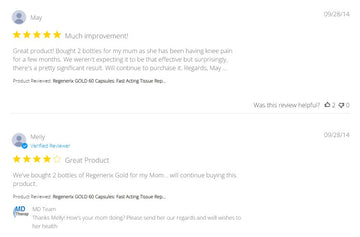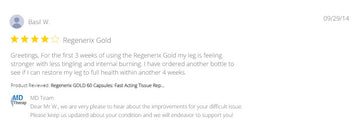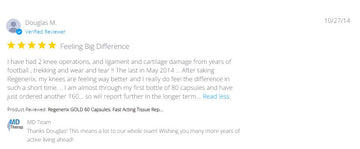Cat–Camel (Cat–Cow): Gentle Spinal “Flossing” for Low Back & Neck
由 MD therapeutics 上 Aug 17, 2025
Why Cat–Cow helps (the principles)
-
Segmental motion & synovial flow: Alternating spinal flexion/extension “washes” synovial fluid over facet joints and nourishes cartilage, easing stiffness.
-
Disc nutrition via pressure changes: Gentle, rhythmic endplate loading promotes fluid exchange (imbibition) in intervertebral discs—helpful for morning stiffness and desk-posture backs.
-
Motor control & pain modulation: Slow, breath-led movement down-regulates guarding, refines deep trunk activation, and can reduce threat perception → better range with less pain.
-
Scalable & joint-friendly: You control depth and speed, keeping forces low while reintroducing movement in sensitive spines (lumbar spondylosis, nonspecific low-back pain, neck tightness).
How to do it (range-aware):
-
Setup: Hands under shoulders, knees under hips. Spread fingers; press gently through palms; long neck.
-
Move:
-
Inhale → Cow: Tailbone up, chest forward, shoulder blades glide down (avoid dumping into lumbar).
-
Exhale → Cat: Tuck tailbone, broaden shoulder blades, gently round.
-
-
Dosage: 1–2 sets of 6–10 slow cycles, 1–3×/day or as warm-up. Keep pain ≤3/10 and resolved within 24 h; otherwise reduce depth.
-
Modifications: Pads under knees; fists/handles for wrist comfort; forearms on bench if shoulders are irritable; micro-range for discogenic pain, slightly flexion-biased sets for stenosis comfort.
Limits of exercise alone
-
Systemic drivers (sleep, stress, diet, metabolic health) aren’t fixed by movement alone.
-
Flares cap load, creating stop–start progress without recovery support.
-
Specific deficits remain: Some need hip hinge training, hip abductor strength, or thoracic mobility in addition to Cat–Cow.
-
Slow remodeling: Discs, facets, and tendons adapt over months—consistent loading + recovery beats “exercise only.”
Why add nutritional correction
-
Improve circulation so post-session tissues receive oxygen and nutrients.
-
Promote repair by supplying matrix building blocks (e.g., collagen peptides, hyaluronic acid).
-
Reduce excessive inflammation to keep daily practice tolerable.
-
Avoid tissue damage by buffering oxidative/catabolic stress from repeated loading.
Botanicals & nutrients often paired with spine-friendly rehab
(Blends traditional lore with published research; evidence ranges from promising to mixed. Check interactions and personal suitability with your clinician.)
Ginger (Zingiber officinale)
-
Traditional: Ayurveda & East Asian medicine for circulation and “wind-damp” aches.
-
Research snapshot: Standardized extracts show modest osteoarthritis symptom relief in some trials; effects vary with dose and preparation.
Turmeric / Curcumin (Curcuma longa)
-
Traditional: Core Ayurvedic spice for joint comfort.
-
Research snapshot: Bioavailability-enhanced curcumin has reduced knee-OA pain and improved function versus placebo in multiple studies.
-
Food reality: Culinary turmeric has little curcumin—hard to hit study-like intakes via meals alone.
Boswellia / Frankincense (Boswellia serrata)
-
Traditional: Ayurveda’s shallaki resin for joints.
-
Research snapshot: Standardized boswellia has demonstrated improvements in pain and function in osteoarthritis cohorts.
Winter Cherry / Ashwagandha (Withania somnifera)
-
Traditional: Adaptogen for resilience and musculoskeletal comfort.
-
Research snapshot: Trials suggest immunomodulatory effects and symptom support in knee-pain populations; may aid training tolerance.
Collagen Peptides (Type II emphasis)
-
Concept: Provide peptides that may support cartilage and connective-tissue metabolism—useful alongside Cat–Cow’s gentle, frequent loading.
Hyaluronic Acid (oral)
-
Concept: Contributes to joint lubrication/viscosity and smoother motion; oral forms are used to support comfort and function.
Cat’s Claw (Uncaria spp.)
-
Traditional: Peruvian/Amazonian remedy for “rheumatism.”
-
Research snapshot: Placebo-controlled work reports short-term improvements in activity-related pain; evidence base is still developing.
The practicality problem
-
Food-only dosing is hard: Daily, research-like intakes of curcumin or ginger are impractical for most people.
-
Pill burden & cost add up: Buying six–seven separate products (ginger, turmeric, boswellia, ashwagandha, collagen, HA, cat’s claw) multiplies capsules and monthly spend versus one comprehensive formula.
A convenient all-in-one option: Regenerix Gold™
Prefer Cat–Cow + nutrition without juggling bottles?
-
What’s inside: Hydrolyzed Type II Collagen, Hyaluronic Acid, and a proprietary blend of Ginger, Turmeric, Frankincense (Boswellia), Cat’s Claw, and Winter Cherry (Ashwagandha)—the same seven ingredients discussed above—combined to promote healthy joint and muscle function and support everyday recovery.
-
Dosing: 2–3 capsules daily.
-
Price: $98 a bottle.
-
Why it fits here: One formula covering seven evidence-linked ingredients is simpler—and typically more cost-effective—than buying 5–7 separate supplements.
-
Track record: Recommended by doctors and physical therapists internationally for about a decade (individual clinician views vary).
Supplements support healthy function; they don’t diagnose, treat, or cure disease. Check interactions (e.g., anticoagulants with turmeric/ginger/boswellia) and personal suitability with your clinician.
A simple spine-mobility plan for this week
-
Daily: Cat–Cow 1–3×/day, 6–10 slow cycles per set.
-
2–3×/wk add-ons: Pelvic tilts, prone press-ups (small range), thoracic extensions over a foam roller, and gentle hip-flexor/hamstring stretches.
-
If symptoms spike: Shrink range by 30–50% and re-progress once symptoms calm within 24 h.



